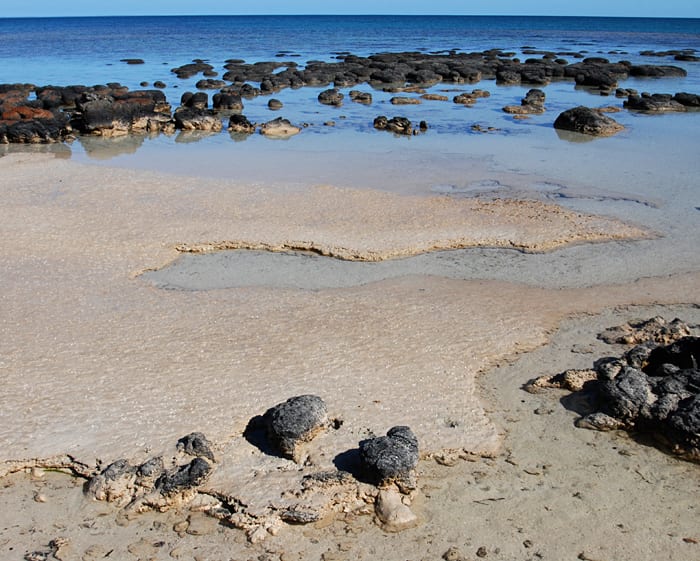Image
Primal Crust
October 3, 2011Cyanobacteria and other microbiota produce thick mats that bind sedimentary particles and can form stromatolites such as these crusting a pool in Shark Bay, Australia. Because they include hard components such as carbonates and sediments, stromatolites can be preserved in the fossil record. The oldest stromatolite fossils are more than two billion years old, giving scientists a rare glimpse at ancient life on Earth–and at what microbes on other planets might look like. Geobiologist Joan Bernhard and biologist Virginia Edgcomb of WHOI, with Roger Summons of MIT and other co-workers, are analyzing modern stromatolites to discover what kinds of eukaryotic organisms are associated with them and to gain insight into Earth’s early ecosystem. Join us Nov. 22 , when Edgcomb and Bernhard lead a Dive & Discover cruise to look for eukaryotes in another extreme habitat, the Deep Hypersaline Anoxic Basins of the Mediterranean Sea. (Photo by Virginia Edgcomb, Woods Hole Oceanographic Institution)
Image and Visual Licensing
WHOI copyright digital assets (stills and video) contained on this website can be licensed for non-commercial use upon request and approval. Please contact WHOI Digital Assets at images@whoi.edu or (508) 289-2647.

